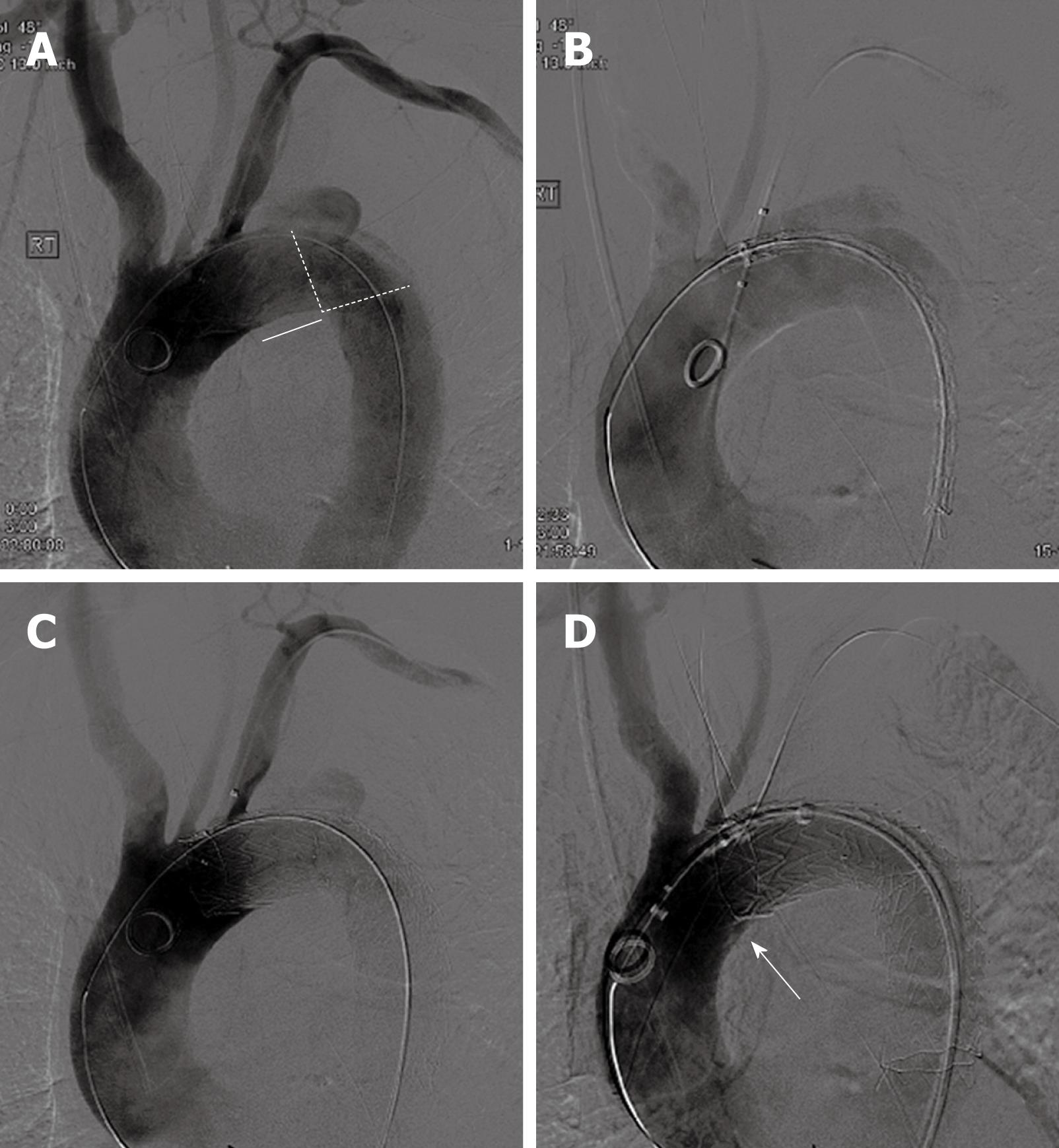Copyright
©2009 Baishideng Publishing Group Co.
Figure 1 An 84-year-old male’s injury was repaired in the hybrid operating suite.
A: Traumatic injury. There is one centimeter along the lesser curve in a straight portion of the aorta that could serve as a landing zone, but much less along the outer curve (straight line). The “no-man’s land” is indicated by the stippled line, and would also act to destabilize the endograft if such a short landing zone was accepted. Thus, we felt subclavian coverage was required; B: Using the pig tail as a marker the exact location of the subclavian artery is marked during all maneuvers; C: After deployment of a Gore-TAG® 31 mm × 15 cm (W.L. Gore & Associates, Flagstaff, AZ, USA). This length was chosen to gain better distal stability because of the acute aortic curvature. A Type I endoleak is noted. The proximal portion of the graft is in the “proximal no-man’s land” of the ascending aorta and does not appose well against the inner curve here; D: After gentle ballooning, the endoleak is obliterated and although a lip still remains (arrow) the graft has improved apposition.
- Citation: Karmy-Jones R, Teso D, Jackson N, Ferigno L, Bloch R. Endovascular approach to acute aortic trauma. World J Radiol 2009; 1(1): 50-62
- URL: https://www.wjgnet.com/1949-8470/full/v1/i1/50.htm
- DOI: https://dx.doi.org/10.4329/wjr.v1.i1.50









